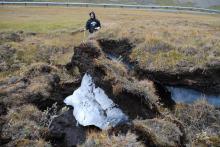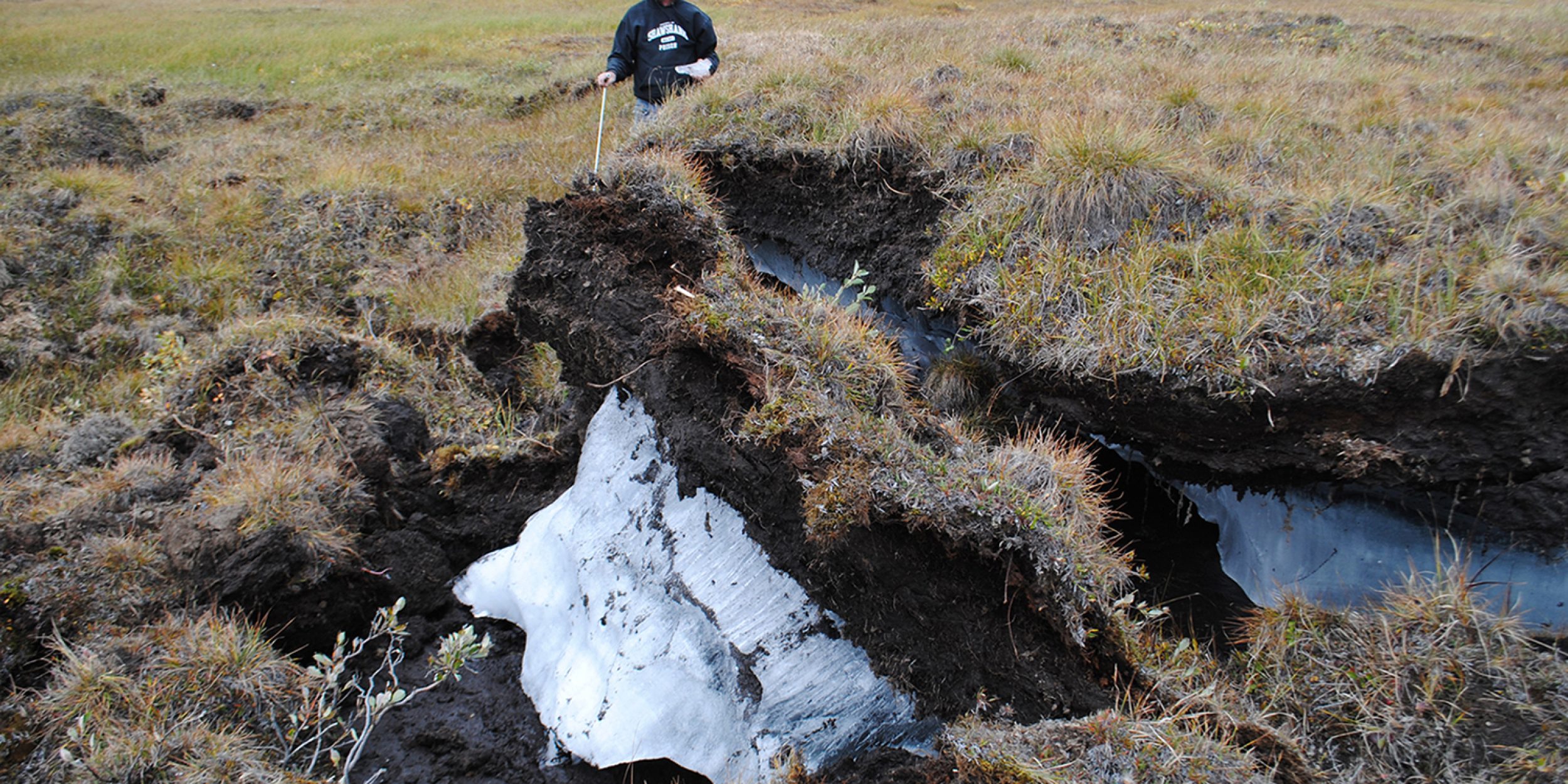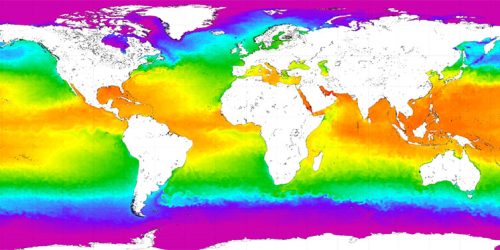Greenhouse gas emissions from thawing Arctic permafrost could result in an additional $43 trillion in economic impacts by the end of the twenty-second century, according to a new study by researchers from the University of Cambridge and the National Snow and Ice Data Center (NSIDC). The study, which was partially supported by an AC4 grant, was published in Nature Climate Change.
Permafrost or frozen ground, which contain about 1,700 gigatons of carbon in the form of frozen organic matter, have begun to thaw in response to Arctic warming over the past few decades. As the permafrost degrades, carbon dioxide and methane are released, amplifying the effects of emissions from human activity.


Under the A1B scenario, which assumes rapid economic growth and projects increased anthropogenic emissions until the atmospheric concentration of carbon dioxide reaches about 700 parts per million in 2100, the authors assumed zero anthropogenic emissions after 2100. They found that the total, cumulative permafrost emissions raise the economic impacts of climate change by 2200 from $326 trillion to $369 trillion, an increase of 13 percent.
This work was supported by CPO’s AC4 grant Na09OAR431004 (Exploring the dynamics of high latitude carbon balance)
For more information, view the full NSIDC news story: nsidc.org/news/newsroom/PR_thawing-permafrost-cost-trillions
Access the Nature Climate Change paper at: http://dx.doi.org/10.1038/nclimate2807.
Emissions from thawing permafrost add trillions in economic impacts











